Showing Spotlights 1649 - 1656 of 2779 in category All (newest first):
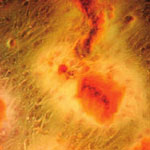 It is widely believed that stem cell therapies have the potential to revolutionize the treatment of human diseases. Key to the success of such therapies are two crucial properties: the ability of stem cells to develop into any specialized cell type depending on the specific need at hand; and the ability to guide the fate of the stem cells by various external factors. Researchers in Asia have now demonstrated that graphene provides a promising biocompatible scaffold that does not hamper the proliferation of human mesenchymal stem cells and accelerates their specific differentiation into bone cells. The differentiation rate is comparable to the one achieved with common growth factors, demonstrating graphene's potential for stem cell research.
It is widely believed that stem cell therapies have the potential to revolutionize the treatment of human diseases. Key to the success of such therapies are two crucial properties: the ability of stem cells to develop into any specialized cell type depending on the specific need at hand; and the ability to guide the fate of the stem cells by various external factors. Researchers in Asia have now demonstrated that graphene provides a promising biocompatible scaffold that does not hamper the proliferation of human mesenchymal stem cells and accelerates their specific differentiation into bone cells. The differentiation rate is comparable to the one achieved with common growth factors, demonstrating graphene's potential for stem cell research.
May 24th, 2011
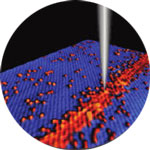 Germanium was the basic material of first-generation transistors in the late 1940s and early 1950s before it was replaced by silicon (the first silicon transistor was produced by Texas Instruments in 1954). Using germanium instead of silicon as transistor material would enable faster chips containing smaller transistors because higher switching speeds than in silicon could be achieved using germanium. A novel fabrication route demonstrated by a research team in Australia, using a combination of scanning tunneling microscope (STM) lithography and high-quality crystal growth, opens up an entire new area where quantum behavior of highly confined electrons in germanium can be studied for the first time.
Germanium was the basic material of first-generation transistors in the late 1940s and early 1950s before it was replaced by silicon (the first silicon transistor was produced by Texas Instruments in 1954). Using germanium instead of silicon as transistor material would enable faster chips containing smaller transistors because higher switching speeds than in silicon could be achieved using germanium. A novel fabrication route demonstrated by a research team in Australia, using a combination of scanning tunneling microscope (STM) lithography and high-quality crystal growth, opens up an entire new area where quantum behavior of highly confined electrons in germanium can be studied for the first time.
May 20th, 2011
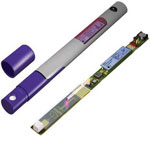 Microfluidic chips have proven to be a breakthrough analytical technique that has rendered analysis of proteins a medical routine. The sensitivity limits of immunoassays have been enhanced to picomolar concentrations using monoclonal antibodies, new labeling techniques, and devices for signal transduction and acquisition. It is now possible to routinely determine levels of hormones, cancer markers, response to infection with bacteria and viruses, monitor the evolution of a disease and test for medication levels. In a new review article, researchers argue that the most promising opportunities of microfluidics for diagnostics reside in point-of-care applications because a number of unmet needs can be fulfilled by microfluidic devices due to their portability, short sample processing time, and flexibility.
Microfluidic chips have proven to be a breakthrough analytical technique that has rendered analysis of proteins a medical routine. The sensitivity limits of immunoassays have been enhanced to picomolar concentrations using monoclonal antibodies, new labeling techniques, and devices for signal transduction and acquisition. It is now possible to routinely determine levels of hormones, cancer markers, response to infection with bacteria and viruses, monitor the evolution of a disease and test for medication levels. In a new review article, researchers argue that the most promising opportunities of microfluidics for diagnostics reside in point-of-care applications because a number of unmet needs can be fulfilled by microfluidic devices due to their portability, short sample processing time, and flexibility.
May 17th, 2011
 A memristor is a two-terminal electronic device whose conductance can be precisely modulated by charge or flux through it. It has the special property that its resistance can be programmed (resistor) and subsequently remains stored (memory). It is thought memristors - with the ability to 'remember' the total electronic charge that passes through them - will be of greatest benefit when they can act like synapses within electronic circuits, mimicking the complex network of neurons present in the brain, enabling our own ability to perceive, think and remember. Researchers have now analyzed in unprecedented detail the physical and chemical properties of an electronic device that computer engineers hope will transform computing.
A memristor is a two-terminal electronic device whose conductance can be precisely modulated by charge or flux through it. It has the special property that its resistance can be programmed (resistor) and subsequently remains stored (memory). It is thought memristors - with the ability to 'remember' the total electronic charge that passes through them - will be of greatest benefit when they can act like synapses within electronic circuits, mimicking the complex network of neurons present in the brain, enabling our own ability to perceive, think and remember. Researchers have now analyzed in unprecedented detail the physical and chemical properties of an electronic device that computer engineers hope will transform computing.
May 16th, 2011
 Several manufacturers are incorporating nano-sized particles of silver into, among other things, garments like socks and shirts to kill bacteria that cause odor. But does the silver stay in the socks or T-shirts? And what happens to it if it washes out? Also, what is the climate footprint of producing the required nanosilver? To answer these questions, a group of researchers have performed a cradle-to-grave life cycle assessment to compare nanosilver T-shirts with conventional T-shirts with and without biocidal treatment. For their assessment, the team used conventional T-shirts treated with triclosan, a commonly applied biocide to prevent textiles from emitting undesirable odors. The results show significant differences in environmental burdens between nanoparticle production technologies.
Several manufacturers are incorporating nano-sized particles of silver into, among other things, garments like socks and shirts to kill bacteria that cause odor. But does the silver stay in the socks or T-shirts? And what happens to it if it washes out? Also, what is the climate footprint of producing the required nanosilver? To answer these questions, a group of researchers have performed a cradle-to-grave life cycle assessment to compare nanosilver T-shirts with conventional T-shirts with and without biocidal treatment. For their assessment, the team used conventional T-shirts treated with triclosan, a commonly applied biocide to prevent textiles from emitting undesirable odors. The results show significant differences in environmental burdens between nanoparticle production technologies.
May 13th, 2011
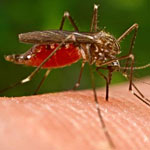 Superparamagnetic iron oxide nanoparticles (SPIONs) are emerging as promising candidates for various biomedical applications such as enhanced resolution imaging or targeted drug or gene delivery due to their biocompatibility, low cost of production, ability to immobilize biological materials on their surfaces, and potential for direct targeting using external magnets. Over the past few years, researchers demonstrated that magnetofection is an appropriate tool for rapid and specific gene transfection with low dose in vitro and site-specific in vivo applications. In new work, scientists in Australia have now successfully demonstrated the use of magnetofection for the delivery of malaria DNA vaccine.
Superparamagnetic iron oxide nanoparticles (SPIONs) are emerging as promising candidates for various biomedical applications such as enhanced resolution imaging or targeted drug or gene delivery due to their biocompatibility, low cost of production, ability to immobilize biological materials on their surfaces, and potential for direct targeting using external magnets. Over the past few years, researchers demonstrated that magnetofection is an appropriate tool for rapid and specific gene transfection with low dose in vitro and site-specific in vivo applications. In new work, scientists in Australia have now successfully demonstrated the use of magnetofection for the delivery of malaria DNA vaccine.
May 11th, 2011
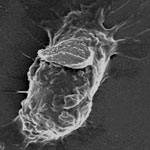 Macrophages are white blood cells with a wide presence in various organs and tissues, that perform an essential role in keeping organisms healthy by scavenging cellular debris and disease agents. Since macrophages play an indispensable role in most pathological conditions, they represent an ideal target for therapeutic applications. Several approaches seeking to use macrophages for targeted therapies involve feeding therapeutic nanoparticles to macrophages ex vivo, followed by re-injection of the macrophages to target the diseased site. These techniques are often hampered by reduced drug release rates and drug degradation. Overcoming these limitations, scientists now report the ability of cellular backpacks to successfully encapsulate and controllably release drugs and avoid phagocytic internalization while remaining on the macrophage's surface.
Macrophages are white blood cells with a wide presence in various organs and tissues, that perform an essential role in keeping organisms healthy by scavenging cellular debris and disease agents. Since macrophages play an indispensable role in most pathological conditions, they represent an ideal target for therapeutic applications. Several approaches seeking to use macrophages for targeted therapies involve feeding therapeutic nanoparticles to macrophages ex vivo, followed by re-injection of the macrophages to target the diseased site. These techniques are often hampered by reduced drug release rates and drug degradation. Overcoming these limitations, scientists now report the ability of cellular backpacks to successfully encapsulate and controllably release drugs and avoid phagocytic internalization while remaining on the macrophage's surface.
May 10th, 2011
 In the wake of the BP oil spill in the Gulf of Mexico we published a general overview of the wide variety of nanomaterials and nanotechnologies that offer significant promise for oil spill cleanup and recovery. One problem with many existing solutions though is that they are one-offs, i.e. one they absorb oil they can't be re-used and need to be disposed of (which could in turn create secondary pollution effects). Ideally, any oil absorbent material used during ocean oil spills should be reusable and with special wettability that could controllably capture and release oil pollution repeatedly. Addressing this issue, researchers have now created an underwater water/solid interface inspired by fish scales. The surface of this new material shows superamphiphobicity in air and superoleophilicity under water, allowing it to be repeatedly used to capture and collect oil droplets in water.
In the wake of the BP oil spill in the Gulf of Mexico we published a general overview of the wide variety of nanomaterials and nanotechnologies that offer significant promise for oil spill cleanup and recovery. One problem with many existing solutions though is that they are one-offs, i.e. one they absorb oil they can't be re-used and need to be disposed of (which could in turn create secondary pollution effects). Ideally, any oil absorbent material used during ocean oil spills should be reusable and with special wettability that could controllably capture and release oil pollution repeatedly. Addressing this issue, researchers have now created an underwater water/solid interface inspired by fish scales. The surface of this new material shows superamphiphobicity in air and superoleophilicity under water, allowing it to be repeatedly used to capture and collect oil droplets in water.
May 9th, 2011
 It is widely believed that stem cell therapies have the potential to revolutionize the treatment of human diseases. Key to the success of such therapies are two crucial properties: the ability of stem cells to develop into any specialized cell type depending on the specific need at hand; and the ability to guide the fate of the stem cells by various external factors. Researchers in Asia have now demonstrated that graphene provides a promising biocompatible scaffold that does not hamper the proliferation of human mesenchymal stem cells and accelerates their specific differentiation into bone cells. The differentiation rate is comparable to the one achieved with common growth factors, demonstrating graphene's potential for stem cell research.
It is widely believed that stem cell therapies have the potential to revolutionize the treatment of human diseases. Key to the success of such therapies are two crucial properties: the ability of stem cells to develop into any specialized cell type depending on the specific need at hand; and the ability to guide the fate of the stem cells by various external factors. Researchers in Asia have now demonstrated that graphene provides a promising biocompatible scaffold that does not hamper the proliferation of human mesenchymal stem cells and accelerates their specific differentiation into bone cells. The differentiation rate is comparable to the one achieved with common growth factors, demonstrating graphene's potential for stem cell research.
 Subscribe to our Nanotechnology Spotlight feed
Subscribe to our Nanotechnology Spotlight feed





